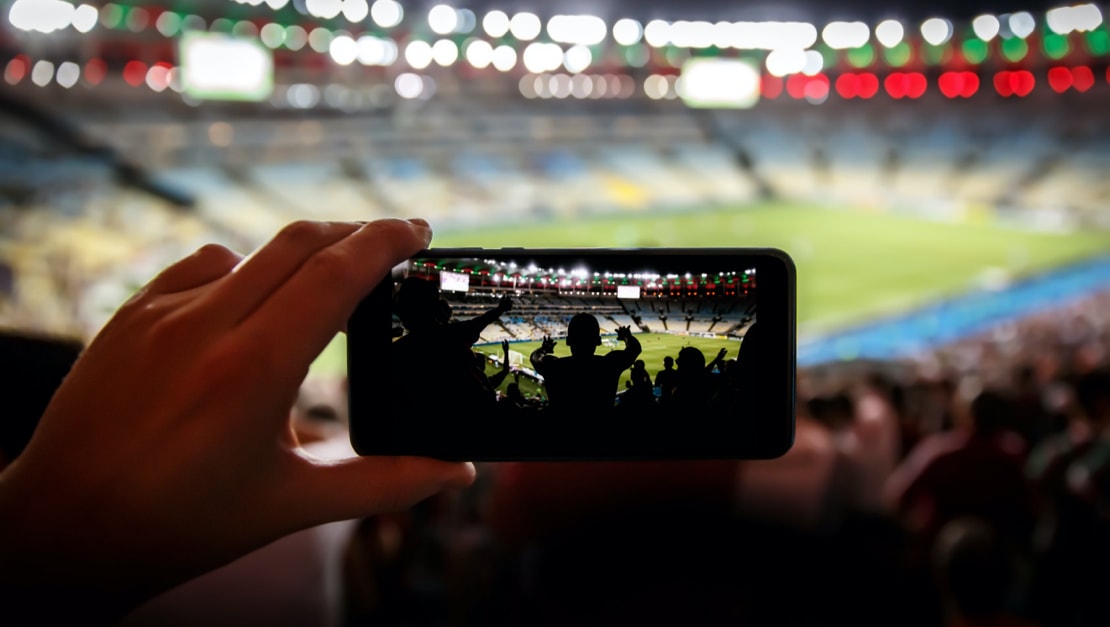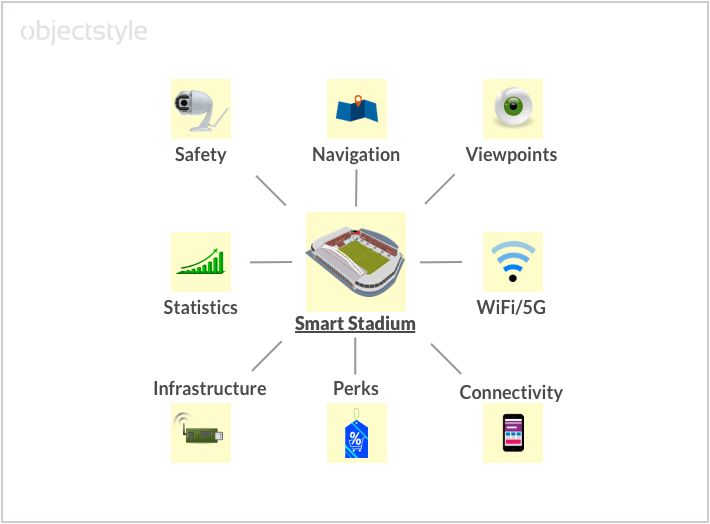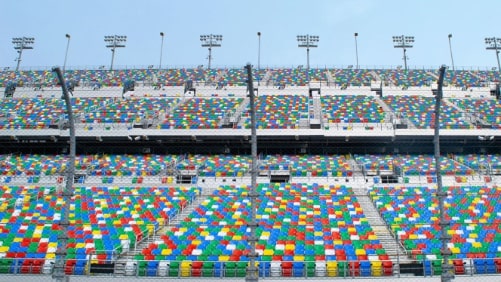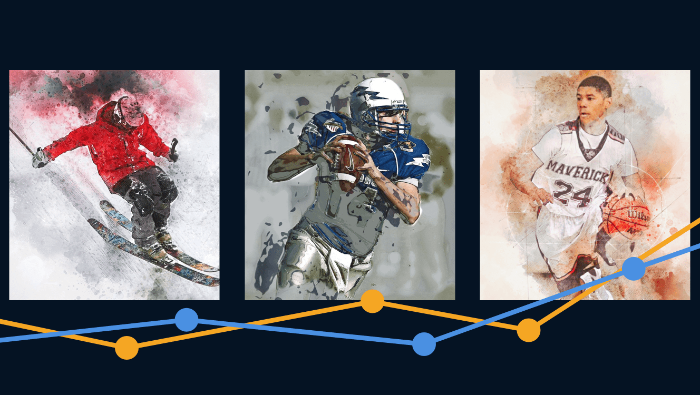
Do you remember how regular cell phones gave way to smartphones? Gradually, smartphones ousted their predecessors from existence. Something similar is now happening in the world of sport venues: smart arenas are gradually taking over traditional facilities in many ways.
Live sports event organizers always compete against the “TV and fridge” duo that fans can experience from the comfort of their homes. Hence, they try to make the in-venue experience just as smooth and cosy.
What is a smart stadium?
The smart stadium is also sometimes called the “connected” arena. There are certain things such venues normally have in common:
- Smart navigation: visitors can find available parking spaces, their seats, the nearest/least-busy exit, the closest restroom, and other POIs on the mobile app.
- Multiple game viewpoints: closeups visible on giant HD screens; instant replays are pushed to fans’ smartphones; fans can choose from multiple viewpoints; VR activations are available, etc.
- Ultrasonic Internet speed: hyper-fast, high-throughput network that connects people and IoT devices; 5G coverage (at some arenas.)
- Bring your own device: organizers try to lure more fans by enabling low-latency, real-time sharing of the game experience.
- Real-time data: pushing real-time player and team statistics to indoor monitors and/or the mobile app.
- Safety: analyzing security camera footage with AI and getting automatic alerts about suspicious activity; using facial recognition to bar access to unwanted persons and to prevent unauthorized people from entering staff-only areas.
- Extra perks: ordering food from your seat and having it delivered to you; getting coupon notifications while in souvenir stores; loyalty programs.
- Infrastructure monitoring: energy-saving algorithms, auto-detection of areas that need maintenance or cleaning.

Smart arena examples
Not only do smart stadiums provide a much better fan experience, but they also help game organizers make more money per event.
The following are smart sports venue examples, along with the extra features they offer.
Atlanta’s Mercedes-Benz Stadium
The Mercedes-Benz Stadium in Atlanta boasts 2,000 TV screens around the concourses, a state-of-the-art audio system, over 1,800 wireless access points, 4,000 miles of fiber, optimized cell service, and a mobile app designed to be one’s stadium remote control.
But the most attractive part is what the owners call “the largest video board in professional sports”: a 63,000-square feet, 360-degree HD video screen that goes around the entire top section of the arena (although one reviewer wrote they could not see the Halo Board in its entirety, because it was partly blocked by the section above.) The smart stadium has enough bandwidth to allow fans to stay on call throughout the event, if they choose.
Cisco’s Connected Golf Course (Pebble Beach Golf Links)
Cisco is the Official Technology Partner of the United States Golf Association (USGA). In 2019, it unveiled “the first-ever connected course” at Pebble Beach Golf Links for the US Open championship.
Industry insiders say that golf traditionally lags behind other sports in terms of technology adoption, while sports in general tends to lag behind other industries. That said, putting up a course-wide WiFi network to support over 100,000 connections is a big step for both Cisco and USGA. The network is called to up the experience of those watching, attending, working at and covering the championship.

Here is what else was unveiled as a part of the initiative:
- A U.S. Open app with content like “360-degree virtual reality, a virtual photo booth that utilizes 3D modelling technology, wayfinding to easily navigate around the course, and advanced data and analytics.”
- A new app for Apple TV and Roku that allowed consumers to watch live-streaming coverage.
- Cisco Webex collaboration technology that helped more journalists connect to press conferences, players, and more.
NACK5 Stadium Omiya in Saitama, Japan
NTT Group, a large telecom holding in Japan, used its Smart Stadiums solution to work its magic on NACK5 Stadium Omiya in Saitama Prefecture, Japan. As it is the case with other smart venues, it allows visitors to connect their devices to the Internet and essentially interlinks people, goods, services, and content.
The following are the main features that NTT Group implemented at NACK5 Stadium Omiya:
- A high-density Wi-Fi service that ensures easy access to the Internet and provides special content (pictures of players, etc.) through the team’s official smartphone app.
- A VR activation where fans can experience a goal scored through the eye of the goalkeeper, as if they had been on the pitch (via Oculus Rift.)
- Encouraging fans to visit nearby shops in Omiya by providing an app that highlights POIs on a map and provides information on coupons.
- Visitors can order food via an app and have it delivered to your seat for an extra charge.
- A Wi-Fi multicast system that allows high-definition video programs to be broadcast simultaneously with minimal delay. Smartphone app users can enjoy watching video programs linked to the live game (there are three channels for that currently), while also catching up on any action they may have missed.
Ultimately, it’s all about the fan
Smart stadiums have a ton of benefits: nearly zero-latency connectivity, a smooth fan experience, enhanced conform and security, and more. In addition, they help show organizers attract more foot traffic, winning over those people who find traditional mass events chaotic and uncomfortable.
Besides, thanks to the large number of data gathered at such venues, there are additional marketing opportunities. Plus, it’s easier and more cost-effective to handle various organizational moments (e.g., automated security checkpoints, camerperson-free broadcasts, robotic food delivery.) This is particularly important at times like these, because it helps implement social distancing during the pandemic.
But the biggest difference lies in augmenting the fan experience: fans have complete control over when and how they wish to consume the game, be it by looking at the pitch, looking at the HD screen with stats, or replaying game bits on their smartphone – in the end, the fan is in control.
Related Blogs

Can AR energize sports games played without fans?
LEARN MORE